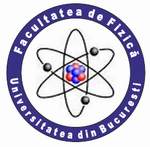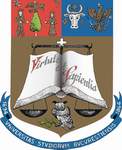| |
 |
UNIVERSITY OF BUCHAREST
FACULTY OF PHYSICS Guest
2025-10-05 22:45 |
 |
|
|
|
Conference: Bucharest University Faculty of Physics 2025 Meeting
Section: Atmosphere and Earth Science; Environment Protection
Title:
Long term photometric survey of inactive GEO satellites
Authors:
Mirela Madalina TRELIA(1,2), Dan Alin NEDELCU (2), Mirel BIRLAN (1,2,3)
*
Affiliation:
1) University of Bucharest, Faculty of Physics, Doctoral School of Physics, Str. Atomiștilor 405, Măgurele, Ilfov, Romania
2) Astronomical Institute of the Romanian Academy, Str. Cuțitul de Argint 5, 040557 Bucharest, Romania
3)IMCCE, Paris Observatory, 77 av. Denfert-Rochereau, 75014 Paris cedex France
E-mail
madalina.trelia@astro.ro
Keywords:
photometry, space debris, perturbations
Abstract:
Photometric data of inactive satellites provide critical insights into their physical and dynamical properties, such as shape, spin rates, attitude and how these parameters change over time. This data is necessary for accurate modelling of satellite ephemerides, an important requirement in an already congested environment.
The aim of our work is to monitor the GEO orbital region and to characterise the dynamical behaviour of inactive satellites that reside in the graveyard orbit or intersect the geostationary ring.
Beginning in February 2023, we continuously surveyed a set of inactive GEO satellites to monitor their rotational properties evolution. We used the large FOV (2.15°x 2.15°) HARET telescope, located at Berthelot Observatory (MPC L54) in General Berthelot, Romania, to acquire multi-night photometric data for up to 60 minutes, during the entire period of visibility of GEO drifting objects. Each observation session consisted of taking on average 1200 images of short exposure time (1 sec or less) using the telescope in tracking mode, with the satellite as the target. We have developed in-house the program APSIS - Automated Photometric Survey of Inactive Satellites, an automated procedure that is able to reduce the images, compute the magnitudes and the rotational periods and to generate the light curves for each satellite in near real time. Visual analysis of the data revealed significant changes in the folded light curves of the same object between observation sessions. For a small subset of tracked objects, we detected a cyclical evolution in their rotational periods.
We present the astronomical instrumentation, observation strategy, the algorithms of data processing and potential mechanisms driving the observed period evolution.
Acknowledgement:
The work of MMT was partially supported by a grant of CAMPUS FRANCE - Agence française pour la promotion de l'enseignement supérieur, l'accueil et la mobilité internationale, no 145720N.
|
|
|
|